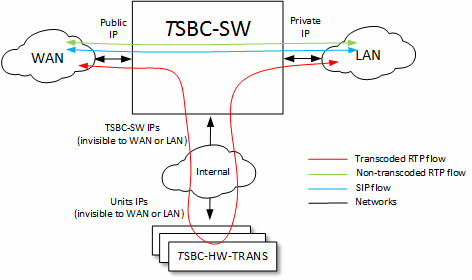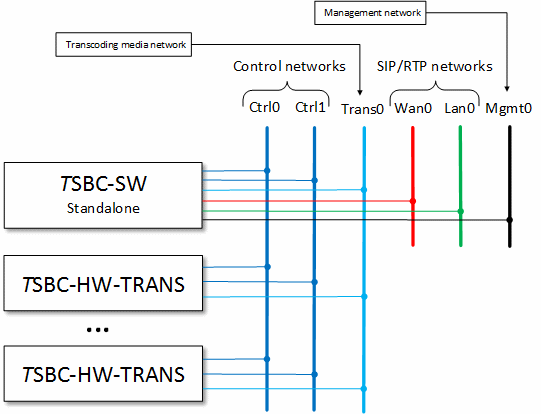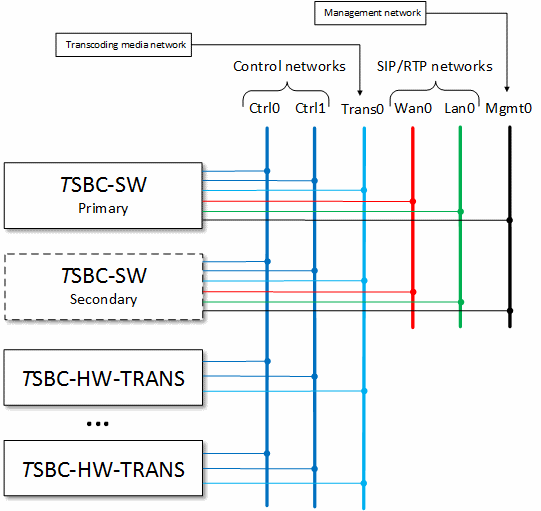ProSBC:Transcoding and Network Setup
Contents |
Requirements
ProSBC requires external hardware transcoding unit supplied by Telcobridges to do transcoding between different codecs used in SIP/RTP communications. It is also used to play and record. Please see ProSBC for more information on transcoding unit.
ProSBC with transcoding deployments require a minimum of three networks for initial configuration. The first network will be used as a local management interface to access the instance using the web portal (HTTP/HTTPS) and SSH access. The second network will transport the actual incoming and outgoing VoIP streams (signaling and media) that the ProSBC and transcoding unit will process. The third network will be used as a control interface connecting to another host in ProSBC 1+1 configuration and transcoding unit in the system for control purpose.
Network setups
Depending on the technical requirements of a particular deployment, a ProSBC can be installed as a standalone or protected (1+1) system. These options have different network needs to fulfill their functions. In addition to redundancy, the support of external transcoding equipment with the ProSBC also adds to the network requirements. The following sections depict the different supported network configurations.
Transcoding
The ProSBC session border controller should be the only equipment facing the different networks to ensure proper protection and monitoring. In that sense, any transcoding units deployed (TSBC-HW-TRANS) will never be visible from data networks handled by the SBC. The ProSBC will require three internal networks to reach the transcoding units: two control networks and one media network. The control networks are the same as those deployed for redundant systems while the media network will contain all the VoIP traffic coming in or out of the transcoding units.
Standalone with transcoding
Combining the standalone network requirements to the transcoding network needs, the deployment of such a system requires multiple networks as depicted below:
1+1 with transcoding
Combining the redundant network requirements to the transcoding network needs, the deployment of such a system requires multiple networks as depicted below:
Network device discovery
Once all networks have been physically (or virtually) connected to the ProSBC instance, the system can be started. Upon first bootup with indication for requirment to connect transcoding unit to the ProSBC system (or after an operator initiated 'network device role' reset), the ProSBC web portal will show a network device assignation page. This page is used to identify the role of each detected devices. As described above, the role can be any of the following three: control, management or VoIP traffic (named LAN/WAN). Once the role is selected, the operator can enter a name for each. Every configured/detected physical network device will then appear as a 'physical port' in the 'IP Interace' tab in the web portal.
The operator can click on the '+' sign to get more information about a specific network device. These information are helpful to match detected networks with the real network based on these characteristics (IP, driver type, etc).
Configuring Transcoding Unit(s)
For configuring Transcoding unit on ProSBC, please see Toolpack:Tsbc IP Network Settings 3.0




